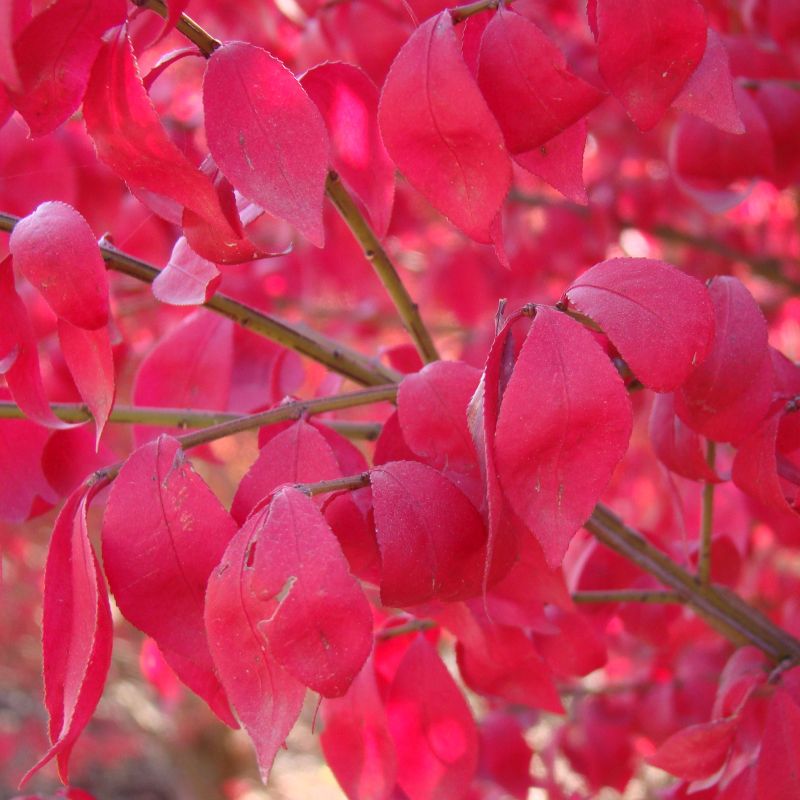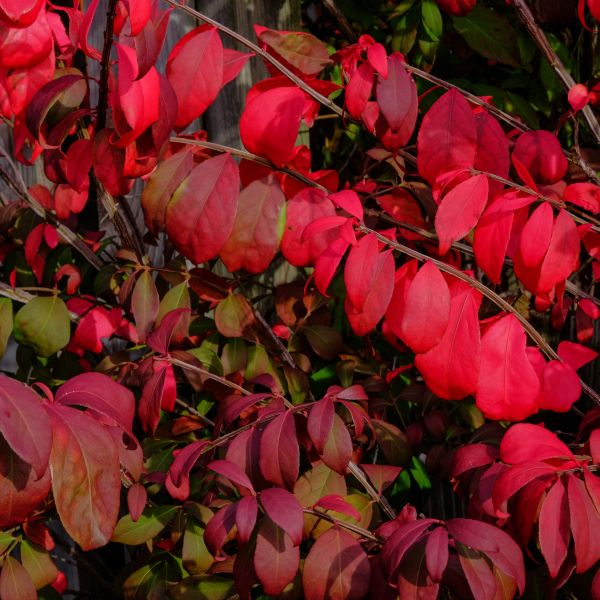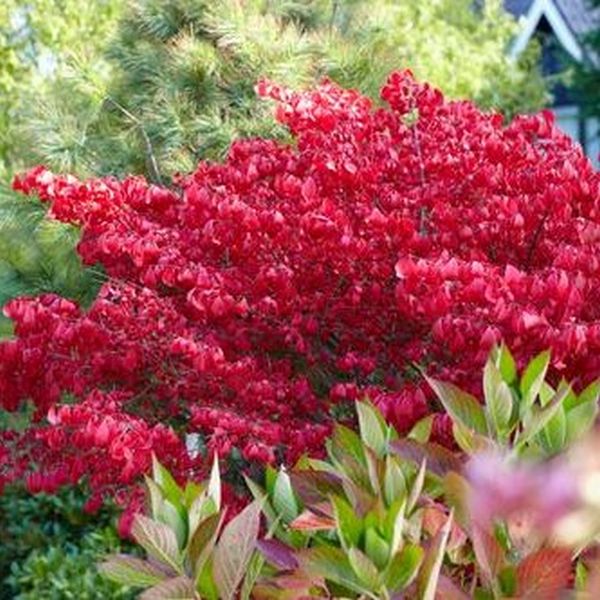Ship to: 43215 Update

- Plants
- Shrubs & Hedges
- Privacy Shrubs
- Burning Bush
Plants Filter
Current Filters
Mature Height
Sunlight
Plant Type
Burning Bush
Burning Bush, also known as Winged Euonymus or Euonymus alatus, is a deciduous shrub belonging to the Celastraceae family. It is native to East Asia, including China, Japan, and Korea. Burning Bush is a popular ornamental plant valued for its stunning fall foliage. During the autumn season, the leaves transform into brilliant shades of fiery red, hence the common name "Burning Bush." The shrub has a distinctive feature of corky, wing-like protrusions along its stems, which add an interesting texture to its appearance.
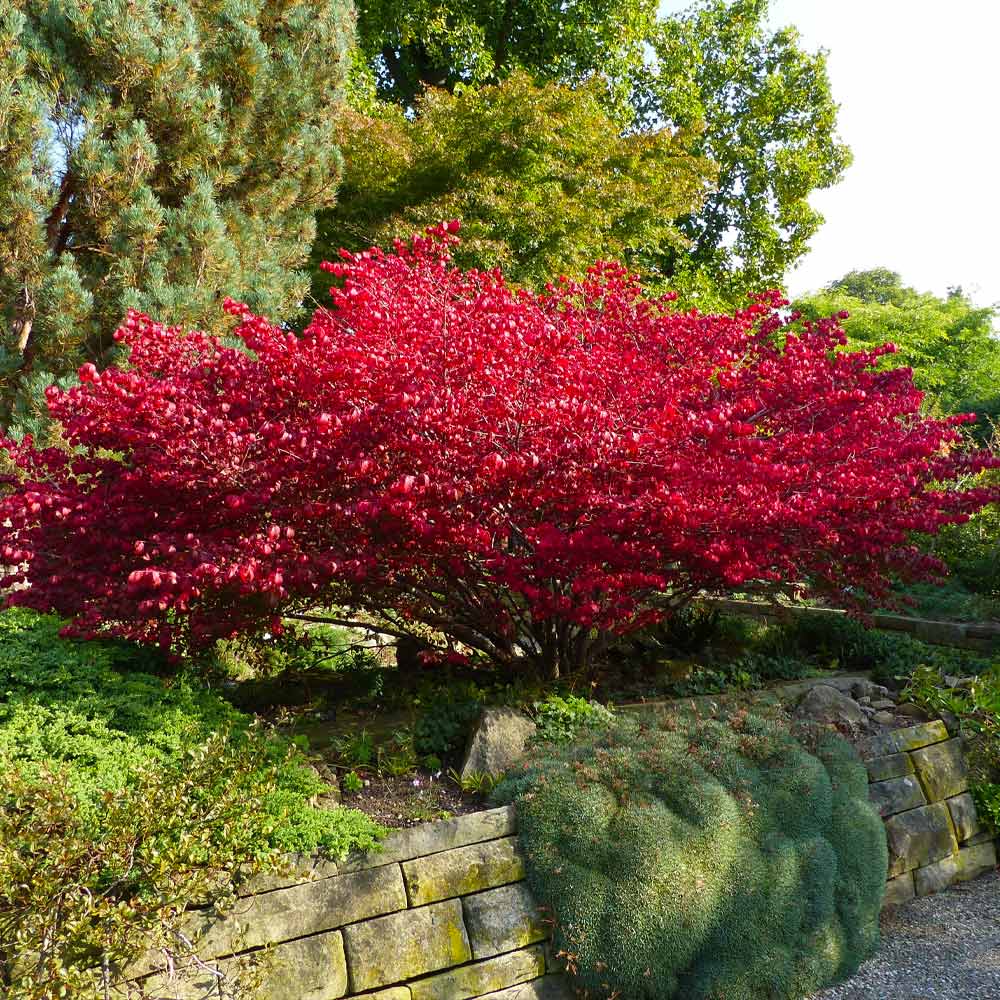
Varieties: There are several varieties of Burning Bush, including different cultivars with slightly varying characteristics. Some popular varieties include:
- Euonymus alatus 'Compactus': A compact form with a more restrained growth habit, making it suitable for smaller spaces.
- Euonymus alatus 'Rudy Haag': Another compact cultivar with a rounded shape and excellent fall color.
- Euonymus alatus 'Fire Ball': A dwarf variety with a tight and mounding growth habit, ideal for small gardens and borders.
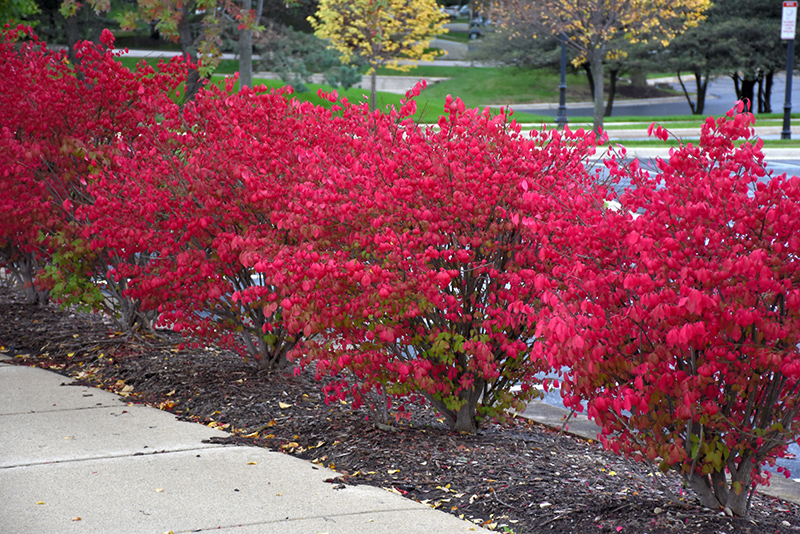
Care Tips:
- Sunlight: Burning Bush thrives in full sun to partial shade. It produces the best fall color when grown in full sun.
- Soil: Well-draining soil is essential for this shrub. It can tolerate a wide range of soil types but prefers good drainage.
- Watering: Once established, Burning Bush is relatively drought-tolerant. However, it benefits from regular watering during dry periods, especially when young.
- Mulching: Applying a layer of organic mulch around the base of the shrub helps retain soil moisture and regulate temperature.
- Pruning: Burning Bush does not require much pruning, but occasional trimming can be done to maintain its shape and remove any dead or crowded branches.
- Fertilization: Generally, this shrub does not need heavy fertilization. A balanced fertilizer applied in spring can support healthy growth.
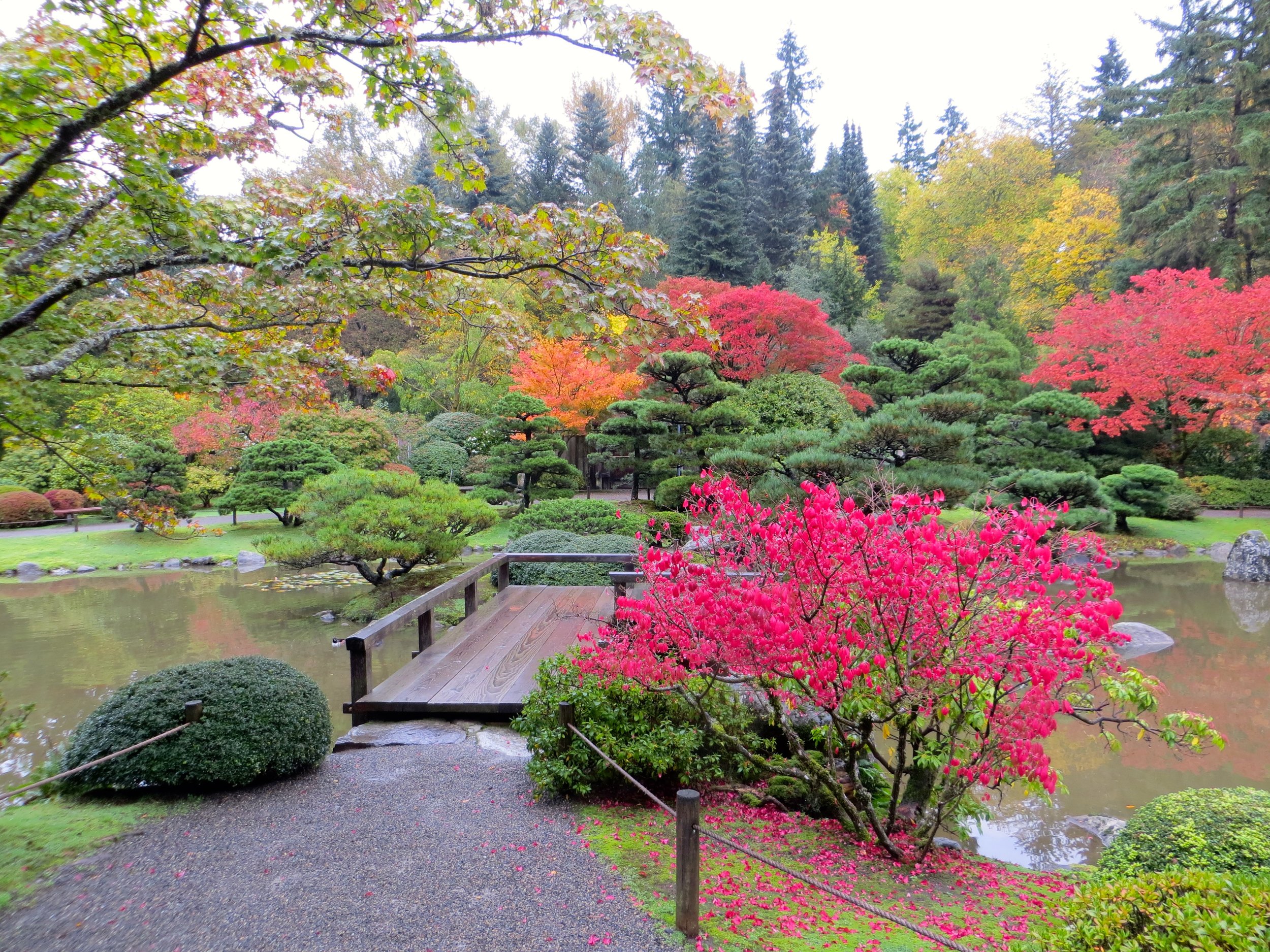
Uses:
- Ornamental Shrubs: Burning Bush is primarily grown for its ornamental value in gardens and landscapes, adding vibrant fall color and visual interest.
- Hedges and Screens: This shrub can be used to create informal hedges or privacy screens, especially when grown in a row.
- Accent Plant: The striking fall foliage of Burning Bush makes it an excellent choice as an accent plant in gardens and landscapes.
- Erosion Control: Due to its dense growth habit and strong root system, Burning Bush can be used for erosion control on slopes.
Burning Bush is a popular choice for its stunning fall foliage, which can create a dramatic display of red color in the landscape. However, it's essential to be aware that Burning Bush can be invasive in some regions, especially in North America, where it has become a problematic invasive species. Before planting Burning Bush, it's important to check with local authorities or gardening experts to ensure it is not considered invasive in your area. If you decide to grow Burning Bush, it can be a rewarding addition to your garden, providing seasonal interest and enhancing the beauty of your outdoor space, especially during the autumn months.
Item has been added to your cart.


